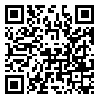Sun, Jan 12, 2025
[Archive]
Volume 17, Issue 1 (March 2020)
IJMSE 2020, 17(1): 11-22 |
Back to browse issues page
Download citation:
BibTeX | RIS | EndNote | Medlars | ProCite | Reference Manager | RefWorks
Send citation to:



BibTeX | RIS | EndNote | Medlars | ProCite | Reference Manager | RefWorks
Send citation to:
Bahrami A, Kazemi F, Abdolahi Sharif J. Investigating the First-Order Flotation Kinetics Models for Iranian Gilsonite. IJMSE 2020; 17 (1) :11-22
URL: http://ijmse.iust.ac.ir/article-1-1169-en.html
URL: http://ijmse.iust.ac.ir/article-1-1169-en.html
Abstract: (15245 Views)
Kinetic models are the most important instruments for predicting and evaluating the performance of flotation circuits. To determine the kinetic order and rate of flotation of a gilsonite sample, flotation experiments were carried out in both rougher and cleaner stages. Experiments conducted using the combinations of petroleum-MIBC, gas oil-pine oil, and one test without any collector and frother. Five first order kinetic models were applied to the data obtained from the flotation tests by using the Matrix Laboratory software. Statistical analysis showed that the classic first order model perfectly matched the rougher and cleaner results performed using petroleum-MIBC combination. The kinetic constants (k) were calculated as 0.04 (s-1) and 0.01 (s-1) for the rougher and cleaner, respectively. Rougher and cleaner tests without collector and frother also matched with the modified gas/solid adsorption and rectangular models with the k values of 0.05 (s-1), and 0.01 (s-1), respectively. The relationship between flotation rate constant, maximum combustible recovery and particle size were also studied. The results showed that the maximum flotation combustible recovery and flotation rate were obtained with an intermediate particle size both in the rougher and cleaner flotation processes. The combustible recovery and flotation rate in the rougher flotation process were higher than that in the cleaner flotation process.
Type of Study: Research Paper |
Subject:
Ceramics
Send email to the article author
| Rights and permissions | |
 |
This work is licensed under a Creative Commons Attribution-NonCommercial 4.0 International License. |






